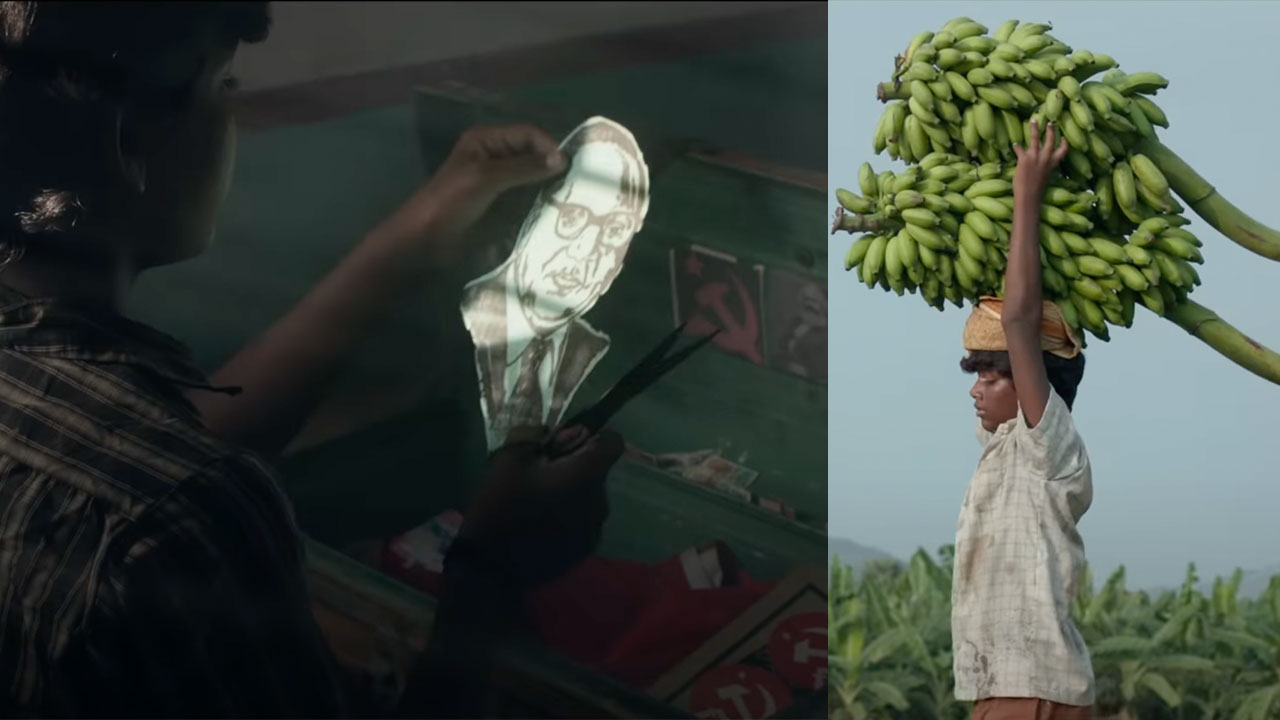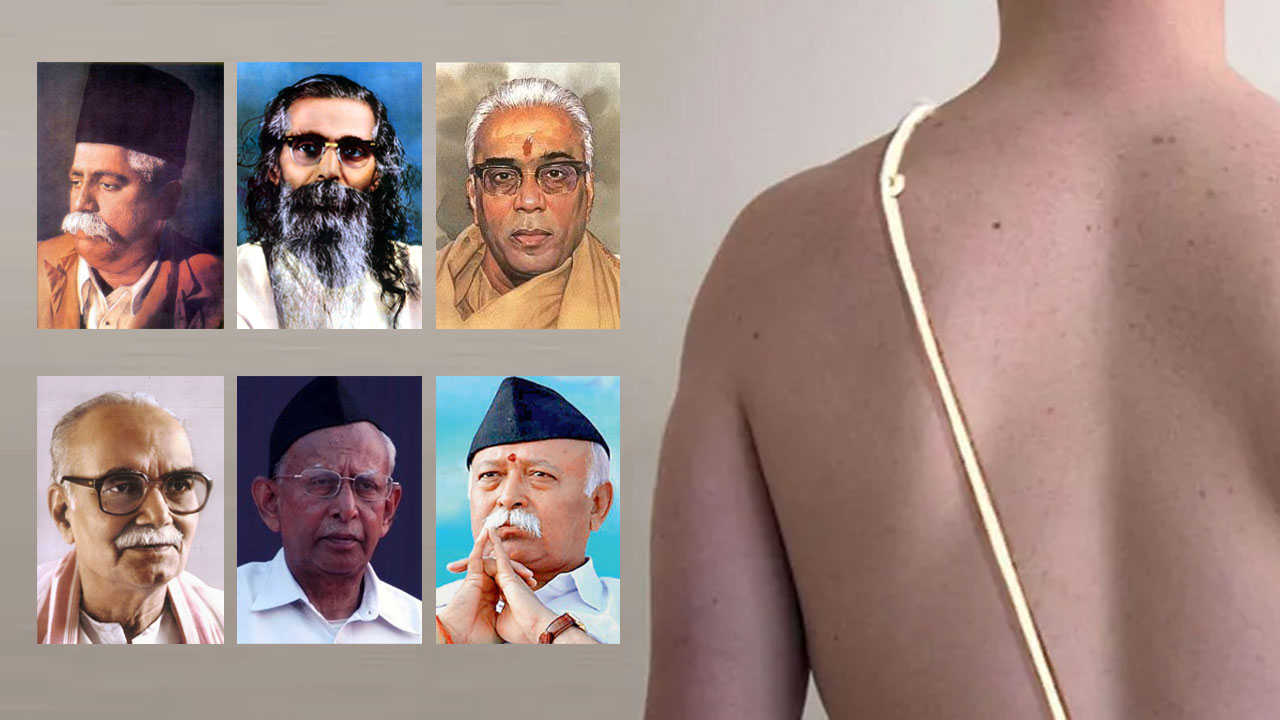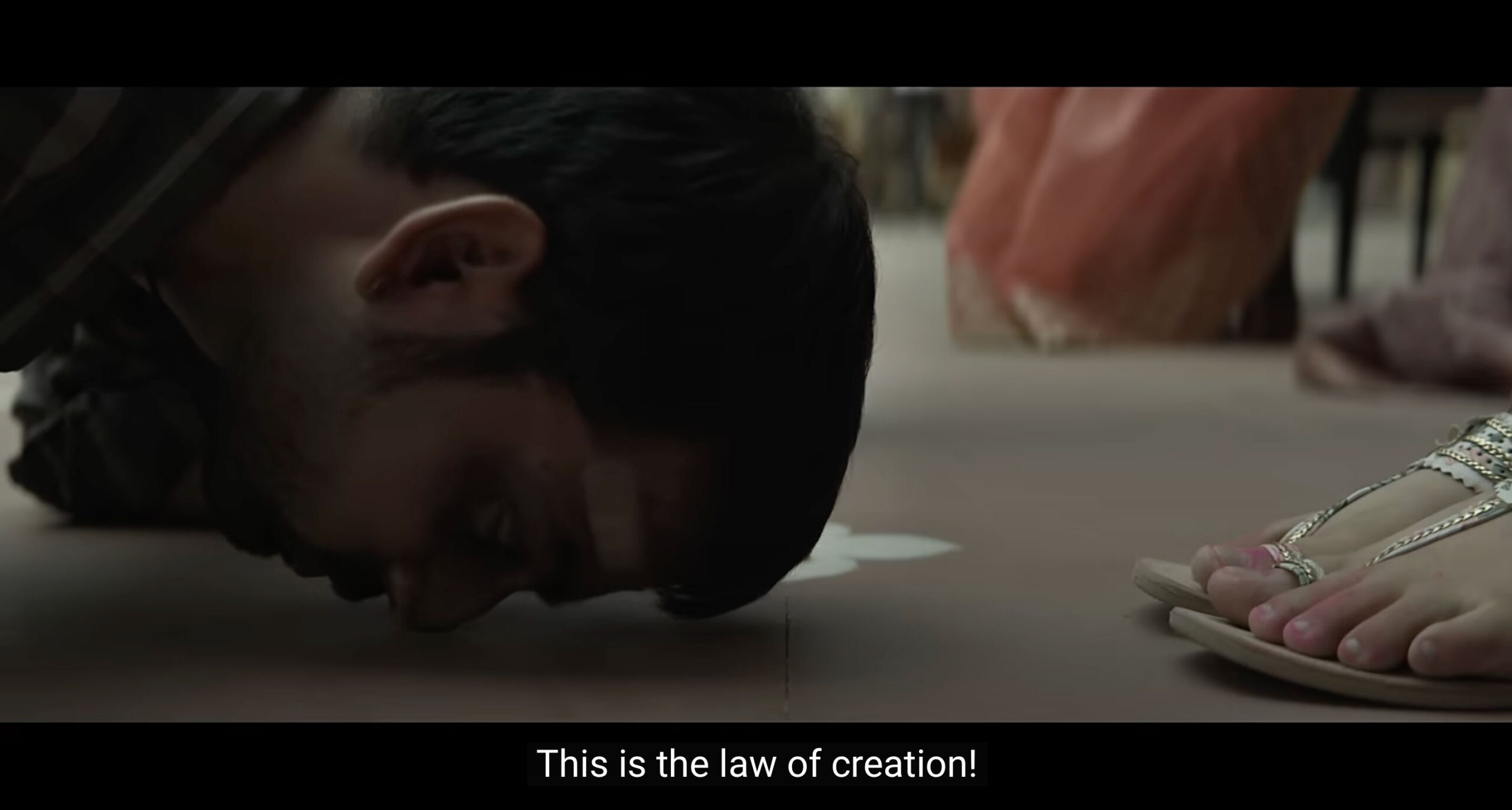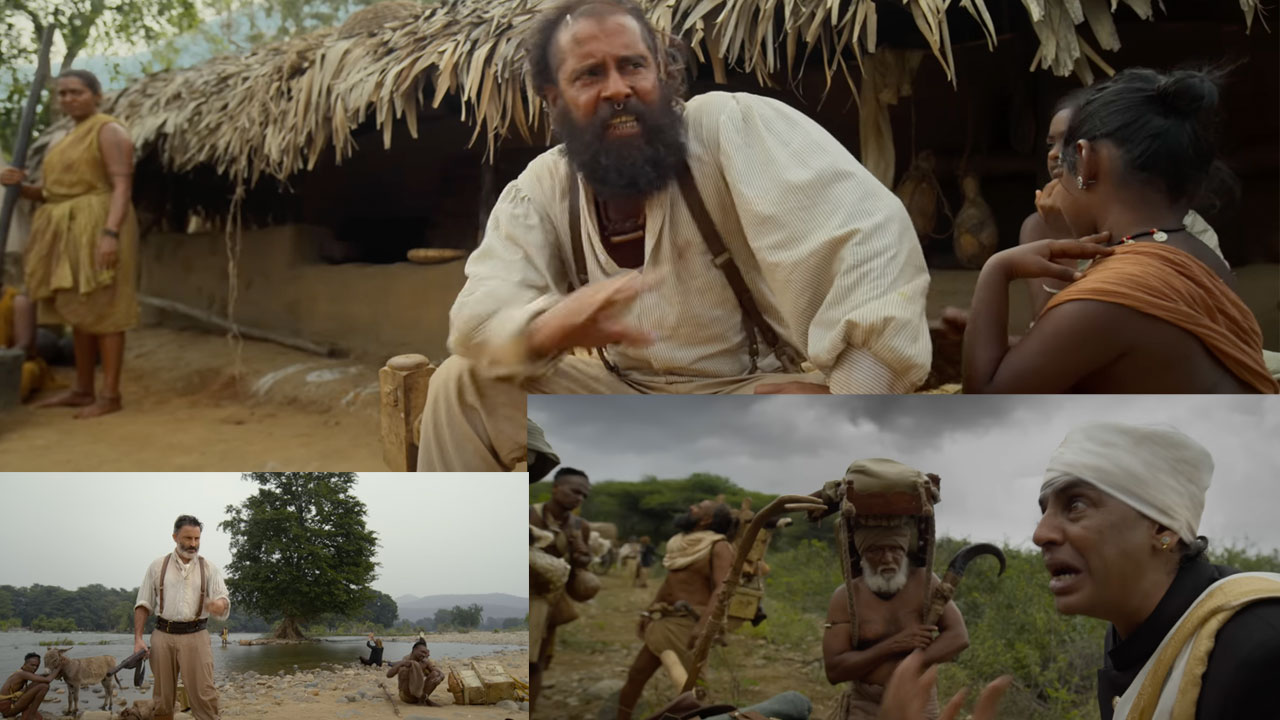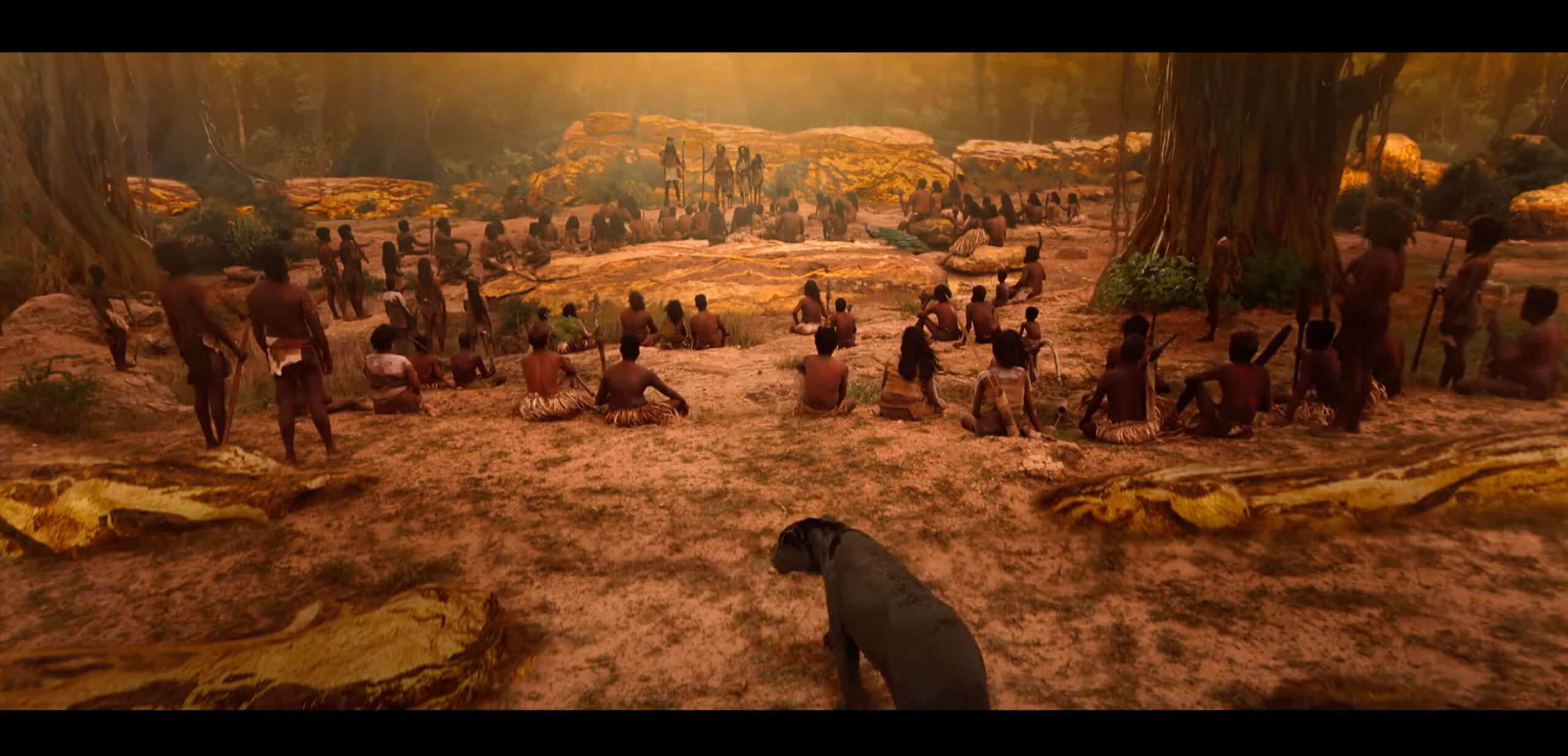Wendy Doniger[1]defines a myth as a story that a lot of people believe although they know it is not true. In fact, the essence of a myth is veiled and therefore people do not pay attention to it. She gives the example of a myth about a Hindu king who had executed 8,000 Jains and says that to understand the myth, one needs to make use of history. If we try and find out why this was written, we will know that Hindus were at loggerheads with the Jains at the time[2]. However, we cannot use the myth to reconstruct the actual history behind it, and we also cannot take it as evidence of cruelty of the Hindu king. Therefore, when we read about Rakshasas in the Ramayana (that Ram killed several Rakshasas), we have to keep in mind that it is an imaginary world and “Rakshasa” was used as a metaphor to describe a group of people who were regarded as enemies. History of ideas, though not the source of “hard” history, is nevertheless a valuable thing, for stories and ideas in stories steer history towards a different future.
John Keay describes myth as “the smoke of history”, and Doniger writes that myths also become fires when they do not account for historical events[3]. Therefore, while myths are not historical, they do hint at history. In other words, even if myths are not history, they contain history’s deepest mysteries. Wendy Doniger, who has done commendable work on Hindu mythology, has called it alternative history. But that alternative history does not reveal the history behind the scenes or the mystery of the myths.
In fact, ancient India’s alternative history or the deep meaning of myths has come to the fore in a better fashion in Dr Ambedkar ruminations on the myths. In his essay, “Ancient India on Exhumation”[4]he writes, “Much of the ancient history of India is no history at all. Not that ancient India has no history. It has plenty of it. But it has lost its character.” Ambedkar says that brahmanical authors have turned this history into mythology that can only “amuse women and children”; he feels that they have deliberately done so.
For instance, the word “Deva” – what does it mean? Ambedkar asks. Does it represent a member of the human family? He says that by using the word to connote a supernatural institution, the pith of history has been squeezed out. Along with “Deva”, names such as Yaksha, Gana, Gandharva and Kinnar can be found. Who were these people? In Mahabharata and Ramayana they seem imaginary beings but Ambedkar does not think so. He says that Yaksha, Gana, Gandharva and Kinnar were members of the human family who were at the service of Devas[5].
Likewise, Dr Ambedkar says that Ramayana and Mahabharata speak of Asura as belonging to an inhuman world: An Asura could eat ten cart-loads of food; they were monstrous in size and slept for six months; they had ten mouths; and so on. Rakshasas are also described as inhuman creatures: Their size, capacity to eat and habits are like the Asuras’. “Nagas” have been somewhat similarly described. They have been called snakes. But can it be true that they were really snakes? Asks Ambedkar. Hindus still link the “nag” caste to snakes. “To understand this, one has to understand the history of ancient India,” Ambedkar says. “But with the help of Buddhist literature, ancient Indian history that was razed by Brahmin writers can be dug out of the debris. Buddhist literature tells us that Devas were a community of human beings. Many of these people went to Buddha to clear their doubts. Then how is it possible that they were not humans?”
Further, Ambedkar says that Buddhist literature also solves the riddle of womb-born Nagas and egg-born Nagas by explaining the two meanings of the “word”. It was the name of a human community. He says Buddhist literature does not consider Asuras as Rakshasas or monsters. They, according to him, were a distinct community of humans. He cites the reference to Asuras in “Satpath Brahman” as the descendants of Prajapati. How they became evil spirits is not known. But it has been said that they fought against the Devas for domination of the Earth, suffered defeat and were forced to submit to their adversaries. Asuras were thus not monsters but members of the human family[6].
2
Before going further into Dr Ambedkar’s philosophy on mythology, it is necessary to understand that he regarded mythology as a separate category of theology. According to him, since ancient times historically two kinds of theologies have been talked about – mythological theology and civil theology. The Greeks have a separate definition for each. By mythological theology, he refers to stories of imaginary gods and goddesses while he includes in civil theology the knowledge about festivals in the state almanac and associated fasts and rituals[7]. Ambedkar has carried out a historical analysis of Hindu myths as part of mythological theology, which is an original and a necessary contribution to the history of Indian thought. He has re-rendered many myths and theologies in his research and his incisive reflections on Vedas, Upanishadas, Puranas, Gita, gods and goddesses, Kaliyug and Sankara communities have revealed many historical truths.
First, let us consider his thoughts on the Gita. No doubt the story of Gita is imaginary, but it exists in the form of a text. Dr Ambedkar regards it as counter-revolutionary theology, which was created to counter the revolution of Buddha. He has concluded that the Brahmins’ entire mythological literature was woven after the political victory of Pushyamitra. According to him, six kinds of literature were written during the time of Pushyamitra: 1) Manusmriti (2) Gita (3) Sankaracharya’s Vedanta (4) Mahabharata (5) Ramayana and (6) Puranas. He writes that this brahmanical literature was the reason for the demise of Buddhism[8].
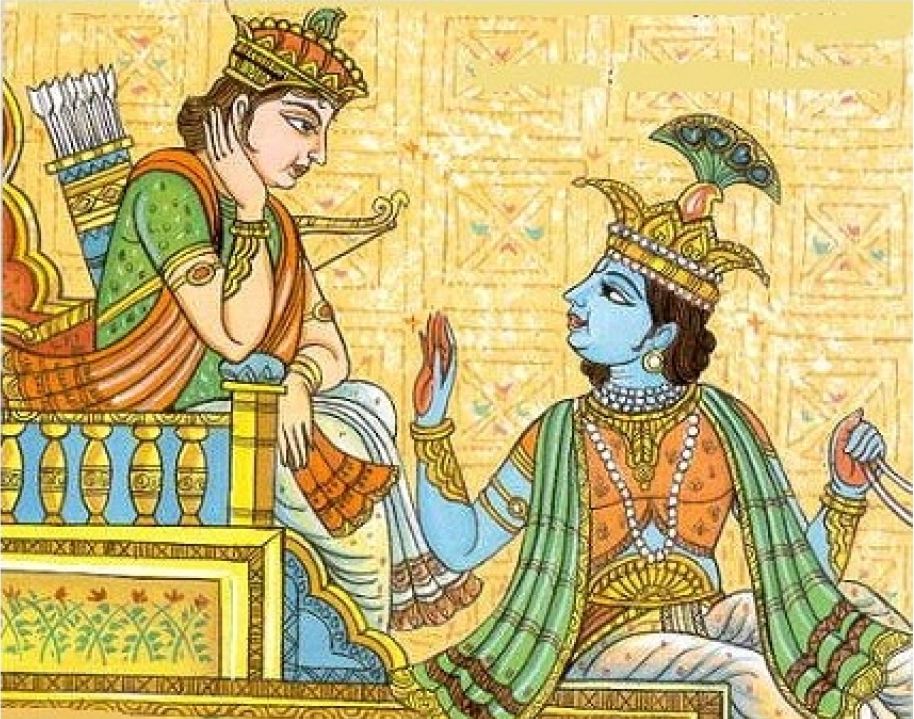
The Gita is a dialogue between Krishna and Arjun. Who is Krishna? Ambedkar writes that there are several answers to this question in the Gita. He appears as a human at the beginning, driving Arjun’s chariot. He is a warrior. Then he turns into a superhuman – a director of war and a controller of destinies. He doesn’t stop there. He takes the form of a God and begins to speak like a god. The god assumes many forms: Vasudev (10/37) Bhagawan (10/12), Vaman Avatar (10/21), Shankar Avatar (10/23), Brahmin (15/15), etc.[9]
Ambedkar questions the teachings of Krishna. It is said that the Gita’s teachings are about the salvation of the human soul. According to the Gita, there are three paths to the salvation of the human soul: Jnana Marg (the path of knowledge) (2/3), Karma Marg (the path of action) (5/2) and Bhakti Marg (path of devotion) (9/14). But Ambedkar dismisses the teachings of the Gita, saying that anybody who wants to call the Gita a religious or a philosophical study may do so and please himself but essentially it is neither theology nor philosophy[10].
He says that Krishna upholds the principle of war and those who die in it, and this has been called philosophy. The first line of this principle is that this world is momentary and the human is but a transient being; the second line is that the body and soul are two separate entities. The body is perishable but the soul is not. The soul is immortal – air cannot dry it, fire cannot burn it and weapons cannot harm it[11]. In Ambedkar’s view, this second principle of Gita is to offer a philosophic defence of the Varna system of the Brahmins – that it was created by God and is therefore sacrosanct. In the Gita (4/13), the principle of the Varna system is heredity[12].
Ambedkar says that the third principle of the Gita is the path of action, meaning observances such as the yajna for salvation. According to him, Krishna says that if a person is conscious and aware, there is nothing wrong with him performing rituals[13]. Ambedkar does not take the Gita’s “karmayoga” and “jnanayoga” to mean “action” or “knowledge” as many Brahmin scholars do. According to Ambedkar, karmayoga refers to Jaimini’s Karmakand and Jnanayog refers to the dogmas contained in Badarayana’s Brahma Sutras; Karmakand and Brahma Sutras have thus been resurrected as karmayoga and jnanayoga[14]. From his research, Ambedkar thus deduces that the Gita worked as a counter to the revolution brought about by Buddhism. Buddha established non-violence and had denounced the caste system and rituals, such as the yajna. The Gita defends violence, the caste system and rituals[15].
Ambedkar says that the Gita has made a childish attempt at counter-revolution by covering violence, caste system and observance of rituals in the garb of philosophy, yet there is no doubt that the Gitahas resurrected the counter-revolution and if that counter-revolution is still in existence today, it is because of the Gita[16].
3
Ambedkar holds the view that the Gita may be part of Mahabharata but the two were not composed at the same time. This becomes clear by comparing the Krishnas in the two texts. In the Mahabharata, Krishna is human, not God. In the Gita, Krishna is the almighty god. Ambedkar says, in Mahabharat, people were not ready even to accord him the leading position. During Rajsuya Yajna, when Dharma wanted to honour Krishna as a guest, Krishna’s close relative Shishupal not only opposed it, but also insulted him by calling him lowly, a person devoid of character and a conspirator[17].
Dr Ambedkar thus concludes that Krishna was reimagined in the form of a god after the composition of the Mahabharat. In Riddles in Hinduism,[18]which questions the beliefs in Hindu mythological theology, he dwells separately on the personality of Krishna. He begins a chapter asking how Krishna could be the main character in the war between Kauravas and Pandavas when he was not their contemporary. “Krishna was a friend of the Pandavas who had an empire and Kamsa too had his empire. So did the two empires exist at the same time on the same land?”, he asks. “Second, there is no mention of any conflict between the two empires. He writes that it seems Vyasa, the composer of the Mahabharat, in order to glorify Krishna, deliberately stitched the two separate stories of Krishna and Kaurava-Pandavas together.”[19]
Ambedkar writes that Vyasa tried to transform Krishna into a god in people’s consciousness. But was Krishna worthy of deification? He says the answer can be found in the story of his life. Ambedkar describes and records in detail the birth of Krishna, the antics of his childhood: the slaying of Asuras sent by Kamsa; the killing of Pootna; breaking Shataka’s cart when he was three months old; freeing two yakshas (known as Arjun); slaying of Vrittasura, Bakasura, Adyasura, Bhimasura and Shankhasura; decimation of the serpent, Kaliya; snatching away clothes of women; amorous games with gopis; killing Kamsa with trickery; killing Kamsa’s washerman; bestowing beauty on Kubja (hunchback) and indulging in sexual antics with her; marrying Rukmini, Satyabhama, Jambvanti, Kalindi, Mitravinda, Satya, Bhadra and Lakshman and taking hundreds of other wives; the love affair with Radha; the killing of Shishupal; washing a Brahmin’s feet ; his death at the hands of a hunter. [20]In the light of this narration of his life story, can a person of such character be called almighty god?
4
Krishna and Rama are two ancient gods, who the Brahmins have consecrated as avatars of Hindu god Vishnu. Ambedkar says that the story of Ram, like that of Krishna, also has nothing that justifies his deification[21]. First, he questions the birth of Rama. Dasharath was childless. He needed a son as an heir. When none of the three queens could bear a son, he performed a sacrificial yagna to which he invited Shrung, the sage. Pindas were prepared and fed to the three queens. As a result of the pindas, the queens became pregnant and had four sons – Ram was born of Kausalya, Bharat of Kakeyi and Lakshman and Shatrughan of Sumitra[22]. To say that Ram was born because of the pindas prepared by Shrung is, writes Ambedkar, merely an allegorical gloss to cover up the naked truth that Shrung begotten Ram by Kausalya. Even if it is not disreputable, Ambedkar adds, it is certainly unnatural[23].
Dr Ambedkar says the story of the birth of Ram’s associates too is distasteful. According to Valmiki when God Brahma came to know that Vishnu had taken birth in the form of Ram, he summoned the gods and ordered them to create powerful associates for Ram. To carry out the command, they raped not only Apsaras and unmarried daughters of Yakshas and Nagas but also the lawfully wedded wives of Ruksha, Vidhyadhar, Gandharvas, Kinnars and Vanaras and produced the associates for Ram. Even if we disregard the birth of Rama, the birth of his associates was the result of a disgusting spectacle of unlawful sexual intercourse[24].

Dr Ambedkar has also commented on Ram’s marriage. According to the Buddhist Ramayana, Sita was Ram’s sister and both were Dasharath’s children. Valmiki does not agree. According to Valmiki’s Ramayana,Sita was the daughter of king Janak, not Ram’s sister. But Janak did not beget Sita. A farmer found when he was ploughing his field and presented him to the king. Therefore, in a superficial sense, Sita can be said to be Janak’s daughter. The story in the Buddhist Ramayanais realistic and consistent with the rules of marriage among contemporary Aryans. In this context, Ambedkar says, if the story is true, the marriage of Rama is not the ideal[25].
One of the virtues ascribed to Ram is that he was monogamous. Dr Ambedkar finds it is difficult to understand how this notion spread among the common people, because Valmiki does mention that Rama had several wives besides many mistresses. In this, he was the ideal son of Dasharath who himself had several wives other than the three mentioned[26].
Ambedkar has brilliantly discussed Ram’s life as an individual and a king. He speaks of the killing of Bali and second, the abandonment of Sita. He writes that the murder of an innocent and unarmed Bali is the greatest blot on the character of Ram, which no argument can justify. Bali was unarmed and therefore to attack him with weapons and that too in a cowardly manner was a crime that is made worse by the fact that Rama had no quarrel with Bali. This action of Ram seems like a terrible and cruelly planned murder[27].
Ambedkar finds Sita’s story also worth considering. After the killing of Ravan, Ram’s first humane duty was to go to Sita, which he did not do. Instead, he was more interested in cremating Ravan and the coronation of Vibhishan. Even after the coronation, instead of going to Sita himself, he sends Hanuman – not to bring her back but to inform her that he, Lakshman and Sugriva are well and Ravana has been killed. It is Sita who tells Hanuman of her desire to see Ram. But Ram does not go to see Sita who has spent ten months in Ravan’s custody after he kidnapped her. Later, when Sita is taken to Ram, he behaves with her like even a common man won’t with his wife under the circumstances. Ram says to Sita: “I came here to kill Ravan and wash off the dishonour. I did not do all this for you.” Can there be anything more cruel than this conduct of Rama towards Sita?[28]
Ambedkar writes that Rama does not stop there but suspecting her conduct, he says she is independent, she can go anywhere. Naturally, Sita calls him low and mean and says she would have committed suicide and saved him all the trouble if he had conveyed to her through Hanuman that he had abandoned her because she had been kidnapped. Thereafter, to prove her purity, she goes through fire and the gods proclaim her to be pure. Ram is satisfied and takes Sita back to Ayodhya[29].
Ambedkar says that Ram’s conduct towards Sita is worse after returning to Ayodhya. He finds that Sita is pregnant. Ram learns from Bhadra the gossip that had spread among the people – that Sita conceived while she was in Lanka. Ram is upset. He calls his brothers and says he is unable to bear the disgrace; that for the sake of his honour, he is ready to abandon them and will not hesitate to abandon Sita.
This shows, Ambedkar writes, that he (Ram) had already thought of this easy way to abandon Sita to save himself from taunts of the public. He does not even deliberate on whether the path is right or wrong. He did not think of Sita’s life, just his personal name and fame. He did not make any effort to quell the rumours, which as a king he could have done. Instead of proving her innocence, he tells Lakshman to leave her in a forest across the Ganges[30].
Ambedkar writes that if Valmiki had not given shelter to Sita, she, left to fend for herself in the forest, would have died for certain. Valmiki lets Sita stay in his ashram, where she gave birth to Luv and Kush. Twelve years pass. Valmiki writes the Ramayana and teaches Sita’s two boys to sing it. Never once in 12 years, observes Ambedkar, does this model husband and father care to find out how his wife and children, living in a forest so close to Ayodhya, are doing[31].
Furthermore, Dr Ambedkar writes that Ram never performed the function of a king. Unlike the ancient kings he neither listened to the complaints of his people, nor attempted to redress them. Valmiki has recorded only one occasion in which he personally hears the grievance of his subjects. But unfortunately the occasion turns out to be tragic. He takes upon himself to redress the wrong but in doing so commits a crime that has no equivalent in history. The infamous incident is the murder of Shambuk. Such was Ram[32].
5
In “Riddles in Hinduism”, apart from discussing Krishna and Ram, Ambedkar has also raised stimulating questions on other myths. We will discuss Manu’s brahmanical definition of “Varna-Sankara” communities – described by Dr Ambedkar as “madness of Manu”. He writes that all those who have read the Manusmriti will know that he has written about many castes like the Aryan and non-Aryan castes, Vraatya, Pathabhrashtha and Sankara castes. Quoting from the Manusmritihe says that Brahmin, Kshatriya, Vaishya and Shudra castes belong to the Aryan community and non-Aryans are all those who did not believe in the chaturvarna (four-varna) system, termed “dasyu”. The Vraatya castes, according to Manu, have three varnas – Brahmin, Kshatriya and Vaishya. The Pathabhrashtha castes at one time believed in the four varnas but later opposed it, while Sankara castes were born to parents belonging to different varnas[33].
Manu has divided the Sankara castes into many categories. (1) Offspring of several Aryan communities, who were categorized as “Anulom” and “Pratilom”, (2) offspring of Anulom and Pratilom communities and, (3) offspring of non-Aryan and Aryan Anulom and Pratilom communities. Ambedkar writes that of the five caste categories mentioned by Manu, it is easy to understand the first, but the fifth (Sankara class) throws up several unanswered questions. In his discussion on Sankara castes, Manu has not given any thought to the union between Vraatya and Aryan castes or between Vraatya and Anulom-Pratilom castes and between Vraatya with non-Aryan castes. Ambedkar says this is not all; Manu has made a few more mistakes. He has not named the Sankara caste that comes from the union of a Brahmin and a Kshatriya. He has not said if the community thus formed is Anulom or Pratilom. Why did he not have answers for these questions? Do we conclude that Sankara caste was not born during Manu’s time? Or was he afraid to mention it? If so, who was he afraid of?[34]

Manu has categorized Ambashta, Nishad, Soota, Ugra, Vaidehaka, Maagadha, Chandala, Aabheera, Vaideha, Shwapaka, Charmakaraka, Andhra etc as progeny of men and women belonging to different castes and has given them the collective name of Sankara. Dr Ambedkar raises an important question here. Do Manu’s explanations about the birth of Sankara castes hold any historical veracity? He gives the example of Aabheera, who is born of the union between a Brahmin man and an Ambashta woman. He says Aabheera (Ahira in the vernacular) is a shepherd community. Historically, we know that shepherds were a tribal community who settled in the lower regions of Northwest extending up to Sindh. It was an independent community and according to Vishnu Purana, they ruled Magadha for many years[35].
According to Manu, the Ambashta were the illegitimate children born of the union between Brahmin men and Vaishya women. But Ambedkar says they were without a doubt an independent tribe who, according to Patanjali, were residents of Ambashta. Ambedkar writes that Megasthenes, the Greek ambassador in the court of Chandragupta Maurya, has written that the Ambashta were a tribe residing in the Punjab and fought Alexander when the Greek king invaded India[36].
Manu regards “Andhra” as a second class of Sankara varna who were born from the union of Vaidehika men and Karwar women. However, Ambedkar says that historic evidence points to quite the opposite. According to him, Andhra were the people who lived in the northern region of the Deccan plateau. Ambedkar cites Megasthenes and Pliny the Elder’s (77 AD) reference to the Andhra community as a powerful tribe who were the prime rulers of the land and who had under them numerous villages and towns that were surrounded by 30 ramparts and protected by moats and ravines; their kings had huge armies consisting of 1,00,000 foot soldiers, 2000 cavalry men and 1000 elephants[37].
Manu has described Maagadha as the illegitimate offspring of Vaishya men and Kshatriya women. Ambedkar points out though that according to Panini Vyakaran(Grammar), the word Maagadha was derived from Magadha and used for those who lived in Magadha. Today, Magadha is referred to the area around Patna and Gaya in Bihar. Likewise, Manu defines Nishada as the illegitimate offspring of a Brahmin male and a Shudra female. But Ambedkar dismisses this theory, pointing out that the Nishada was one of the native Indian tribes who had their own independent king. The origin of Vaidehaka, Ambedkar says, is from the word Videha – used for those who were residents of Videha – while Manu describes them as the legitimate offspring of Vaishya males and Brahmin females[38]. It is evident from the few examples, Dr Ambedkar writes, how Manu distorted history and humiliated honourable and powerful tribes by calling them illegitimate. Ambedkar says it is a riddle why Manu dwelt on the Sankara castes. What was the motive?
Perhaps, Manu thought that the four-varna system had failed because there were a large number of communities that did not fall in any of the categories of Brahmin, Kshatriya, Vaishya and Sudhra. Perhaps, this prompted him to describe these communities outside the caste system as “Varna-Sankara”. Did Manu not realize that his explanations were so horrific? Asks Dr Ambedkar. Did he not think how his work would affect men and particularly disgrace women? Ambedkar says it is not that men and women did not have illicit relations, but they could not have been in such large numbers that whole communities, Chandal and Untouchables, were born of them. Manu says that Chandals were born from the prohibited union of Shudra men and Brahmin women. Can it be true? If it is true, Ambedkar states, it would mean that Brahmin women were of loose morals and were sexually attracted to Shudra men in particular. He finds this hard to believe because even if every Brahmin woman were a Shudra’s mistress, it couldn’t have accounted for the huge population of Chandals in the country[39]. Ambedkar thus describes the theory of Varna-Sankara as a theory of madness.
6
Dr Ambedkar asks two important questions about the mythological literature of the Puranas, which is an object of reverence for Hindu society. One is about the doctrine of “Trimurti” and the other is about the goddesses. The “Trimurti” consists of the three Gods – Brahma, Vishnu and Mahesh (Shiva). Dr Ambedkar has discussed these questions in detail in Hinduism’s tenth riddle and its Annexure 3[40]. At one time, Brahmins refused to worship Shiva as a god because he had proven that he was against conducting yajnas when he sent his people to wreak havoc on the yajna being held by Daksh Prajapati. Dr Ambedkar says the differences between Aryans and non-Aryans were not communal but cultural. “One, Aryans believed in the four varnas and second, they believed in ritual sacrifices (yajna). In contrast, non-Aryans neither believed in the four varnas nor in the ritual of yajna. The incident of Daksh therefore establishes that Shiva was non-Vedic and a non-Aryan god[41].”
Ambedkar asks: Why then did the Brahmins, considered pillars of Vedic culture, deify this non-Vedic and non-Aryan Shiva? The Hindus did not know the fact that Shiva was non-Aryan and non-Vedic and mistook him for the Vedic god, Rudra. Rudra was like Shiva. One of the mantras in Yajurveda (Taittriya Samhita) describes Rudra (Shiva) as the leader of thieves, robbers and dacoits and king of the downtrodden, the potters and blacksmiths, writes Ambedkar, while being dismayed at how the Brahmins could accept the head of thieves as their most revered god[42].
Hindus throughout India unabashedly engage in Phallic worship. Through Vedic sources, Dr Ambedkar establishes that the practice was primarily connected with Vishnu, not Shiva. He wonders why the Puranas associated phallic worship with Shiva[43].
Dr Ambedkar writes that the Puranas dethroned the Vedic gods and brought in their place new goddesses. This was an unusual event. According to him, there are five goddesses in the Puranas – Saraswati, Lakshmi, Parvati, Durga and Kali. Saraswati and Lakshmi are consorts of Brahma and Vishnu, respectively, whereas Parvati, Durga and Kali were wives of Shiva. While Saraswati and Lakshmi did not fight any battles, Durga and Kali fought the Asuras. Why was it necessary for Shiva’s wives to fight the Asuras because as wives of a non-Aryan god, they too were non-Aryans? There is an answer to this question. The Brahmins had turned the Vedic god Rudra, who resembles Shiva, into Shiva himself. The Mahesh in the “Trimurthi” of Brahma, Vishnu and Mahesh is thus Rudra and no one else.
He reveals yet another secret. Once, Mahish, the king of Daityas, defeated the gods and forced them to roam the Earth as beggars. The gods went to Brahma, Vishnu and Shiva (Rudra) for help but no one could do anything. Vishnu then created a woman known as Mahamaya, which is another name for Durga, who then killed Mahish. But Ambedkar asks: When the cowardly gods had no powers themselves, how could they have given it to their wives? Therefore, to say that the goddesses had powers would be a contradiction.
This essay is not complete, because the field of Ambedkar’s study is massive.
Translation: Maitreyee Saha; copy-editing: Anil
[1]Wendy Doniger, The Hindus: An Alternative History, 2009, Penguin, p 23.
[2]In 12th century, Gujarat Shaivite Raja Ajay Deva (1174-76) tortured and killed Jains.
[4]Dr Babasaheb Ambedkar: Writings and Speeches, Vol 3, (‘Ancient India on Exhumation’), Government of Maharashtra, 1987, p 151
[6] ibid, p 152, ‘Ancient India on Exhumation’
[7] ibid, p 7, ‘Philosophy of Hinduism’
[8] ibid, p 239, ‘Literature of Brahmanism’
[10] ibid, p 361, ‘Krishna and his Gita’
[18]ibid, Vol 4, 1987, ‘Riddles in Hinduism’, Appendix 1


